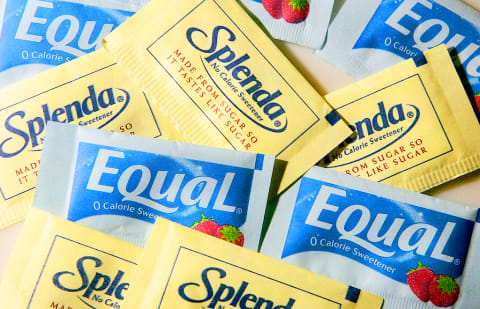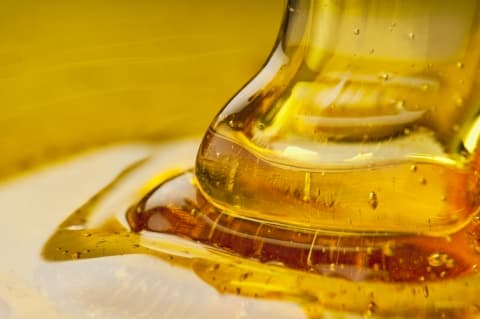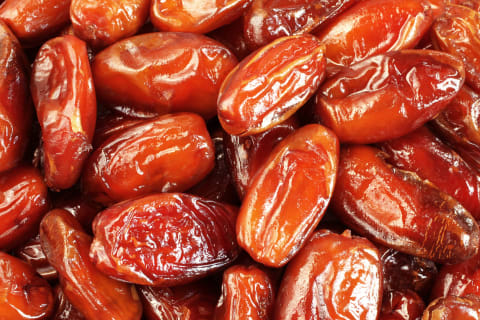While fruit and dairy provide natural sources of sugar, I’m talking about added sweeteners here. Wherever you look in the grocery store or restaurants, sugar and sugar substitutes are added to just about everything—it’s in nut butter, condiments, kombucha, crackers, popcorn, and most everything else that comes in a package. These ingredients go by many names, even super-healthy-sounding euphemisms, so it can be hard to even recognize sugar in all its varying forms. I will share from my experience which sugar substitutes to avoid and those to be used responsibly, with caution and in small amounts. The good (decent), bad, and ugly of sweeteners, if you will. Get your fix, right here. HFCS is derived from corn starch (largely GMO corn) through an intensive chemical process that is anything but natural. Aside from being empty calories, HFCS and its higher proportion (higher than table sugar) of fructose is thought to be metabolized differently, and not in a good way. By bypassing a key regulatory step3 in glycolysis, fructose is rapidly taken up by the liver. Research indicates4 that HFCS can negatively affect lipid metabolism and contribute to insulin resistance and diabetes. HFCS can also lead to another metabolic problem, leptin resistance, which contributes to weight gain and weight-loss resistance. It is also important to note that arsenic can accumulate and be present in rice. Studies have shown5 that arsenic levels have been found to be high in organic brown rice syrup, which is used in a lot of different products6 from cereal and energy bars to formulas for toddlers. Make sure to limit your packaged products where this sweetener is used to decrease toxin exposure. Make sure you are getting raw organic stevia that is still in its green form. Otherwise, in other conventional stevia brands, which may be heavily processed, you may be exposing yourself to other chemicals added as preservatives. These stevia products are often combined with erythritol (and sugar alcohol), dextrose, and flavors. While the stevia plant has many properties and therapeutic potential to help with weight management and metabolic health, there’s the flip side to consider too. For example, a few studies show stevia’s ability to impact hormones. And, preliminary animal research indicates that stevia may disrupt the balance of gut microbiota7, at least in rodents. More research is needed to understand this further. And since it’s sourced straight from tree sap it goes through minimal processing (often simply heating to evaporate the water) to reach its conventional form. The darker the maple syrup, the better, because it contains a higher amount of antioxidant activity8 according to studies in cell models. Regardless of these beneficial traits, remember maple syrup is still full of sugar, so moderation is key. The flavonoids of bee pollen also pack a punch, supporting your immune system9. I consider manuka honey from New Zealand to be the absolute best raw honey you can buy, and research has clearly demonstrated its antimicrobial properties10. While honey is still high in sugar (so use in small amounts), it’s better than refined sugar. When swapping for table sugar, honey has been shown to help improve key lipids11 associated with metabolic disease. A more concentrated version, blackstrap molasses, is considered to be an especially nutrient-dense form of molasses and is achieved by processing the syrup three times to remove as much sucrose as possible. Rich in iron, this mineral is important to help fight fatigue since it’s a critical component of all red blood cells. In addition to being a natural sweetener, dates contain fiber, a variety of antioxidants13, and several micronutrients (potassium, magnesium, copper, manganese, iron, and vitamin B6, amongst others). Thanks to the fiber in dates, they can help those struggling with constipation and help improve overall digestive health by increasing growth of beneficial bacteria14 in the gut. But they don’t work for everyone. Polyols are the “p” in FODMAP, and some people, particularly those with IBS, require a low FODMAP15 dietary approach. Depending on the person and amount consumed, sugar alcohols can have a laxative effect and can flare up digestive problems16 like IBS and SIBO. Your body does not completely absorb these, and they end up fermenting in the large intestine, which can cause gas and bloating. Useful for reducing calorie intake and minimizing glucose and insulin responses following a meal, monk fruit has practical health benefits18. You have to be aware of what kind of monk fruit sugar you are purchasing because some commercially available options have additives, so read the labels and stick with pure monk fruit. Similar to sugar alcohols like xylitol, too much luo han guo can trigger stomach issues in some sensitive individuals. Similar to stevia, the aftertaste of monk fruit sugar is a matter of personal taste and opinion. Additionally, this sweetener contains polyphenols with antioxidant properties, and some nutrients in modest amounts like zinc, potassium, and short-chain fatty acids. Coconut sugar delivers a mellow caramel taste, and organic versions are the best option in my opinion. Like with anything, however, every person is very different, and for those with chronic health conditions even some of these decent sweeteners need to be avoided entirely or for a certain period of time. Make sure to work with a functional medicine doctor to determine your individual needs. A cutting-edge nutrition deep dive taught by 20+ top health & wellness experts







